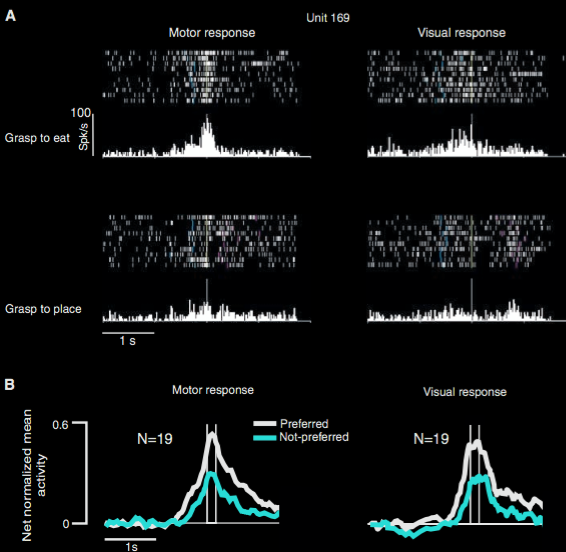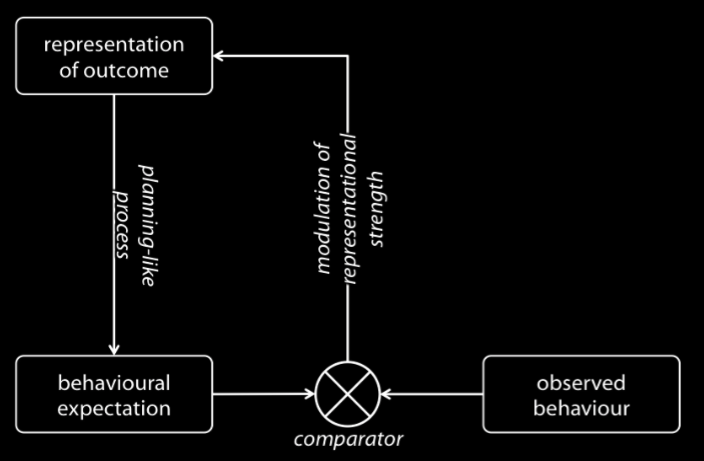Click here and press the right key for the next slide (or swipe left)
also ...
Press the left key to go backwards (or swipe right)
Press n to toggle whether notes are shown (or add '?notes' to the url before the #)
Press m or double tap to slide thumbnails (menu)
Press ? at any time to show the keyboard shortcuts
The Motor Theory of Goal Tracking

Fogassi et al 2005, figure 5
The Double Life of Motor Representation
What are those motor representations doing here?
Motor Theory of Goal Tracking (including Speech Perception)

Sinigalia & Butterfill 2015, figure 1
Pure goal-tracking could,
in principle,
be implemented motorically.
Motor Conjecture
In 9-month-olds,
all pure goal-tracking is explained by the Motor Theory;
---
‘we believe that the three proposed mechanisms of goal attribution [...] complement each other’
Csibra & Gergely, 2007 p. 74
How?
Infants can track goals from nine months of age (or earlier).
Why?
In infants (and adults),
goal-tracking is limited by their abilities to act.
The ‘Teleological Stance’
~ The goals of an action are those outcomes which the means is a best available way of bringing about.
Csibra & Gergely
Tracking
1. This means, m, has been adopted (observation)
2. G is an outcome such that: m is a best available* way of bringing G about
3. ∴ G is a goal of the observed action
‘simulation is clearly a natural and effective way to find the most efficient action towards a goal state.’
Csibra & Gergely, 2007 p. 72
| The Simple View | Motor Conjecture | |
| What is the function to be computed? | [Teleological Stance] | [Teleological Stance] |
| How is this function computed? | By reasoning from beliefs. | By using motor processes ‘in reverse’. |
| Why is goal-tracking limited by action ability? | ??? | Because both rely on motor processes. |